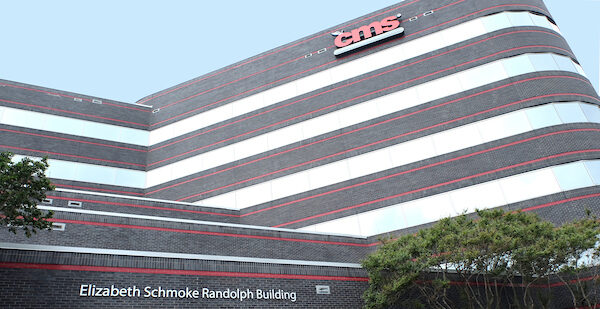
May 18. There’s a battle royale under way over Charlotte-Mecklenburg Schools funding. On one side is CMS; on the other side is Mecklenburg County government, in particular County Chair George Dunlap.
Dunlap, who wants to withhold $56 million funding from CMS, said “If I throw a rock and I don’t hit you, some more are coming.” County Manager Dena Diorio said she wants CMS to produce a strategic plan for county commissioners that outlines how the district will close educational achievement gaps and boost college readiness for students of color.
The rocks are aimed at CMS and Superintendent Earnest Winston.

WINSTON
The school funding fight has to do with closing gaps between students of color and their white peers and improving student achievement, as well as oversight—and politics.
CMS put out this FAQ in response
Q: Why doesn’t CMS share its plan to improve academic outcomes?
A: CMS has shared our 2024 strategic plan with the Board of County Commissioners as recently as May 4, 2021. We began implementing this plan in 2018. Our plan addresses outcomes for all students. The Board of Education and CMS staff continue to fine-tune and revise our strategic plan in light of the impact of the pandemic. We look forward to sharing the results of this governance work at the appropriate time.
Q: Weren’t many of these problems pervasive pre-pandemic?
A: Disparities in educational outcomes for black and brown students have existed in Mecklenburg County and across the nation for decades, just as have disparities in housing, economic opportunity/wages and many other areas. There are many underlying reasons for these gaps existing and widening, including factors beyond the control of public schools. Erosions over the past two-plus decades in the successful reforms enacted after the historic Swann decision 50 years ago are among the causes. Further inequities in housing, food insecurity, wage gaps and other factors that impact students in the 128 hours per week when they are not in the care of our schools also must be addressed. The pandemic has magnified all of these factors. The school system cannot be looked upon in a vacuum when other community ills contribute to the difficulties of addressing educational outcomes.
Q: What is the projected enrollment number for next school year and how does this differ from recent enrollment numbers? How does this affect CMS’s per-pupil budget request to the County?
A: Projected student enrollment for CMS for FY2022 is 143,856 which is higher than the actual enrollment for FY2021 at 140,070. It is important to note that while the FY2021 budget was based on a higher projected enrollment than actually materialized, the state held districts harmless at projected funding levels. CMS followed the state’s lead by retaining staff and maintaining planned allocations to schools to avoid disruption to classes. The district also provided additional support and avoided terminating employees in the midst of the pandemic. To date, CMS has continued to employ staff and prevent layoffs, and furloughs.
The budget request for additional funding for next year is a prime example of how per pupil funding may increase year-over-year. For example, salary and benefit increases for existing staff will increase the per pupil amount even without any change in enrollment. The request for operating costs for new schools and preventive maintenance for existing facilities is needed regardless of changes in enrollment. The request for additional social and emotional support staffing represents an ongoing need to reduce the ratios of staffing to students to meet the needs of students – now more than ever – but was needed long before the pandemic and is also not impacted by the level of enrollment shifts this past year. Bottom line, the budget is not built on a per pupil basis. Instead, the request is driven by and based on additional funding needs.
Q: County officials say their recommended budget contingency will not impact the classroom. CMS says it will – can you explain?
A: Funding reductions and holdbacks of this magnitude impact the classroom. Period.
County funding is used to supplement what we receive in state and other funding sources. Many of the expenses paid with county funds cannot be paid with state funding – even if we had the funds available, which we do not. The recommended allocation completely eliminates the funding in several categories and decimates a few others so operating with this “holdback” of funding as outlined will be extremely problematic.
Local funding pays a portion of salaries for principals. For many assistant principals, entire salaries are locally funded. Another example: the county proposal reduces the budget for Finance and Human Resources by about half of the total planned local funding. Hiring and paying teachers, assistant teachers and other school-based staff are critical functions of these areas. Doing this work with significantly fewer staff will impact our classrooms.
Q: CMS says the funding gap is $81 million. The BOCC says they are funding at a higher rate than last year. What’s the reality?
A: With a $24.5 million portion of our total local funding request unfunded and the $56 million held in “restricted contingency,” we must prepare a budget as if our request is underfunded by about $81 million.
The recommended county budget allocation to CMS for next year is $526.9 million. This is actually only $2 million more than the prior year. However, the prior year allocation designated $4.1 million as one-time funding (for the system modernization project and preventive maintenance) so the base ongoing amount decreased to $520.8 million. Thus the increase referenced by the county manager as $6.1 million is from that lower base amount.
The county manager outlined the recommended allocation for the $6.1 million increase, but that leaves us with $24.5 million in identified needs that remain unfunded – some of which will likely be required to provide locally funded teachers and other staff the same salary and benefit increases mandated by the state and to cover the charter school pass-through cost. As a result, we must cut or downsize programs, put off facility maintenance efforts and delay hiring or reduce staff.
We cannot budget for the school year with a deficit, and it is not fiscally sound to consider $56 million in a “restricted contingency” funding as part of our planned spend for the year until it is released from restriction.
Q: Is the BOCC claim that some NC counties don’t receive county funding true?
A: All counties receive some level of funding support from their respective county.
Q: Why does CMS need $551 million of county funding when the district is receiving $500 million in federal COVID relief money?
A: Federal funding must be used in addition to, not in place of, annual state and local funding. The COVID-related federal funding has specific allowable uses that must be directly linked to the prevention of, reduction of or in response to COVID-19. Almost all components of our budget request for county funding are ongoing recurring expenses that existed prior to and will remain after the pandemic subsides. The request does not include expenses incurred due to impacts of the pandemic, as those will be addressed with the COVID relief funding
Q: Can federal dollars identified in the CMS budget request be used to pay for maintenance expenses that CMS has sought from the county?
A: No. Federal funding must be used in addition to, not in place of annual state and local funding. The COVID-related federal funding has specific allowable uses that must be directly linked to the prevention of, reduction of, or in response to COVID-19. During the budget planning process, the list of facility needs was reviewed and items that are related to improving indoor air quality or reducing the spread of COVID-19 were identified to be included within the COVID-related federal funding. Items under the county request are preventive maintenance items that would not be allowable on the COVID related federal funding.
Q: Is CMS requesting double-billing of funds for charter school students?
A: No, the district is not “double billing” for charter students.
CMS budgets for staffing, services and materials to support the district’s enrollment and operations of district schools. Then, based on the estimated local per pupil funding anticipated for the next year (using the combined district and charter enrollment to compute the per pupil amount), a budget is calculated for the charter school pass-through payments which is incorporated into the overall district budget.
While we do consider the charter enrollment in our budget development process, we do not include the projected charter enrollment as we determine the necessary staffing and support for our district schools; therefore, we are not “double billing” for the charter enrollment in the budget request. Furthermore, this budgeting exercise is recalculated each budget cycle to ensure we adjust for any shifts in enrollment between our schools and charters from year to year.
Q: If the state adopts a budget increasing salaries for state-funded employees, will county-funded employees receive the same increase under the current county budget recommendation?
A: It is the district’s practice to provide the same salary increase for all employees as mandated by the state for state paid employees. This was a part of our budget request from the county. The proposed county funding is not sufficient to cover the anticipated salary and benefit increases so reductions in other areas will be necessary to ensure all of our staff receive any salary increases mandated by the state that they so deserve.
Q: Does the county proposal reduce the CMS budget allocation from the county?
A: The holdback of funding and uncertainty of when it will be released creates a situation for the district to plan a budget that is without that funding. That is the most fiscally responsible action to take in this circumstance.
Q: What about the “unbudgeted” $320 million in federal revenue in CMS’s proposed budget for FY2022? Why has no spending plan been identified for these funds?
A: During the months of budget development work, we were not aware of the American Rescue Plan funding amount and only added an estimate just prior to presenting the budget – even before the state had given us an indication of our allocation. We did this in the spirit of transparency to ensure the community was aware that we anticipated having access to these COVID relief funds over the next few school years. We also discussed at length our intent to prepare a budget using a wide range of stakeholder input and thoughtful review of needs. Additional but yet-to-be-identified factors likely must be addressed in the continued response to COVID-19, and for that reason federal authorities allow districts until 2024 to use the most recent COVID-related funding.
The board of education and the community will be informed once this budget plan is finalized and funding is made available for us to use for COVID-related expenses.
Q: Is CMS’s policy IKE still in effect?
A: Charlotte-Mecklenburg Board of Education Policy IKE governs student Promotion, Retention, and Acceleration and is in effect.
All components of policy IKE are still in effect. House Bill 82, which is the basis for the Camp CMS summer learning and enrichment program, prohibits the retention of kindergarten students. Students in other grades who are retained at the conclusion of the 2020-2021 and successfully complete Camp CMS must have their retention reviewed to determine if it is still warranted.
Q: Is CMS providing individual plans to support all students who qualify for MTSS interventions?
A: The individual plan requirements previously in place were based on a state statute from 2008. That statute has been updated numerous times since then and there is no current requirement that each student be provided such a plan.
Q: Mecklenburg County officials claim that CMS operates 166 schools and CMS says it operates 176 schools. What is the accurate number?
A: CMS operates 176 schools. The North Carolina Department of Public Instruction website supports this fact.





